Study on Passive Ventilation and Cooling Strategies for Cold Lanes and Courtyard Houses—A Case Study of Rural Traditional Village in Shaanxi, China
Abstract
:1. Introduction
1.1. Motivation
1.2. Previous Study
1.3. Scientific Originality
1.4. Target of This Research
- Compare the cooling and ventilation effects of natural ventilation and the new system to estimate the time and efficiency required under cooling and ventilation conditions.
- Calculate the cooling and ventilation efficiency and the time spent in the whole process considering and not considering wall heat radiation.
- Estimate the time suitable for opening the new system throughout the year.
- Estimate the time to effectively reduce the indoor temperature after using the new system.
- Estimate the value in building cooling load throughout the year after using the new system.
- Provide optimization methods for the passive design of traditional houses and guide the transformation of traditional houses and the establishment of new rural houses.
- In this transformation, connect the indoors and cold lanes, and compare and analyze the original buildings to calculate the cooling capacity, ventilation efficiency, and required time.
- Suggest how to reduce the damage from building renovation to architectural characteristics.
- Propose detailed designs and materials to be used in future research based on physical buildings.
2. Methodology
2.1. Investigation Research
2.1.1. Location and Climate
2.1.2. Study Case
- Field research: Collect statistics and summarize the various forms of traditional local houses, and select a number of representative courtyard-style buildings.
- Data measurement: While investigating in the field, select traditional houses related to the research direction for data measurement. The data include indoor and outdoor temperature; outer surface and cold lane temperature; outdoor wind speed; wind speed of building entrance, patio and interior; position and size of doors and windows; angle between the building and the main wind direction within the corresponding time.
- Data summary and organization: The various measured data are processed in a unified manner, and the most representative courtyard-style building is selected as a research case for further study.
- Problem identification: After collating data, it is found that building ventilation and passive cooling performance need to be improved.
- Countermeasures: Consider how to effectively use the air in the cold lane to passively cool the building and improve the indoor ventilation efficiency.
2.1.3. Sunshine Analysis of Cold Lanes
2.1.4. Ventilation Analysis of Cold Lane
2.2. Dealing with Study Case
2.2.1. Passive Ventilation Cooling System Setup
2.2.2. Passive Cooling with Natural Ventilation (Base Case)
2.2.3. Passive Cooling without Wall Heat Radiation
2.2.4. Passive Cooling with Wall Heat Radiation
2.3. Simulation Scheme
3. Results and Discussion
3.1. Comparison of Natural Cooling with and without WHR
3.1.1. Cooling Time and Final Equilibrium Temperature
3.1.2. Cold Lane System Ventilation
3.2. Comparison of System with and without WHR
3.2.1. Cooling Time and Final Equilibrium Temperature
3.2.2. Cold Lane System Ventilation
3.3. Suitable Amount of Time to Use the New System
3.4. Total Amount of Cooling Load Reduced by the New System
3.5. Indoor Temperature Above 28 °C
3.6. Building Repair
- For building renovation, the functions of buildings in the village should be established and be divided into exhibition and residential buildings. Exhibition buildings represent the entire village architecture, which contains historical information, architectural modeling, unique decorative arts, and a technical level of construction. Therefore, this type of building is not suitable for renovation, and its main purpose is to convey information. On the contrary, for residential buildings, more attention should be paid to living comfort and sustainable utilization, and this type of building is suitable for passive transformation.
- The location factors of buildings should be analyzed to decide whether to reform them. It is necessary to learn more about the traffic conditions of the village, including the density and flow of people and accessibility. Buildings on both sides of representative streets are not suitable for renovation, because such streets represent the overall style and regional characteristics of the village. Moreover, the large scale of the main road and surrounding streets also limits the formation of cold lanes. On the contrary, residential areas located deep in the village have relatively low requirements for viewing, and usability is more important to them.
- The introduction of new functions should be carried out under the transformation principle of being identifiable. It should be based on the premise of continuing and inheriting the characteristic elements of traditional architecture as much as possible. Design and construction, which draw on traditional structures and construction practices, are essentially modern and adaptable expressions of traditional residential construction, reflecting the respect and inheritance of traditional culture. We need to pay attention to the unity of the whole village; the parts that are in direct view should be repaired strictly in accordance with the local characteristic style, such as the roofs of buildings. In this study, the new system mainly relied on the external walls of residential buildings for renovation, and the walls were easily blocked by surrounding buildings, which would reduce the damage to the village’s characteristics.
4. Conclusions and Future Research
4.1. Conclusions
- When cooling by natural ventilation, the overall building temperature stabilized after 6.11 h, the average temperature after stabilization was 34 °C, and the cooling efficiency was 0.16 °C/h. After using the cold lane ventilation and cooling system, the overall building temperature stabilized after 2.77 h without WHR, the stable temperature was 29 °C, and the cooling efficiency was 1.81 °C/h. With WHR, the temperature stabilized after 1.66 h, the average temperature after stabilization was 32 °C, and the cooling efficiency was 2.4 °C/h.
- After using the cold lane ventilation and cooling system, the ventilation time of the building was reduced from 33 to 4 min, which proves that the indoor heat exchange rate does not change with the change of air flow rate.
- Based on the absence of wall heat radiation, the amount of time to use the cooling system throughout the year is given. Without WHR, the system can be used for 2036 h throughout the year, accounting for 23.24% of the annual time, and with WHR, the time is 2019 h, accounting for 23.04% of the year (a 17-h difference). Under the condition of natural ventilation, the amount of time exceeding 28 °C in a year is 2062 h, and after using this system, without WHR the amount of time exceeding 28 °C in a year is 1863 h, accounting for 21.23% of the whole year, which is a 199-h difference. With WHR, the amount of time exceeding 28 °C in a year is 1966 h, accounting for 22.44% of the annual total, which is a 96-h difference from natural ventilation. After using this system, without considering wall heat radiation, the annual cooling load reduction in the entire courtyard is 4786.494 kW·h, and with wall heat radiation considered, the annual reduction is 2989.128 kW·h, a difference of 1797.336 kW·h.
4.2. Future Research
- This research needs to be verified in actual operation. The detailed renovation design of buildings will be the focus of future research. It will consider the heat insulation and air-tightness of the materials, minimizing changes to the original building shape, and retaining the unique regional characteristics of traditional buildings.
- Based on the completely passive cooling of the cold lane system, 28 °C is the lowest possible indoor temperature, which still does not meet the standard temperature for human thermal comfort. Future research should consider the energy-saving value of air-conditioning when the air-conditioning and cold lane cooling system are combined to reach the standard comfort range.
- Cold lanes not only can reduce the air temperature but also have the function of local moistening. Future research will consider indoor air humidity as a reference value to judge the comfort of indoor living.
- Setting up shading equipment on windows or patios can be considered, and the change characteristics of indoor temperature and ventilation as well as the reduction in light and cooling load in the room with a combination of shading and cold lane systems can be discussed.
Author Contributions
Funding
Acknowledgments
Conflicts of Interest
References
- Agencia Internacional de la Energía. World Energy Outlook 2017; Int ENERGY AGENCY Together Secur Sustain 2017; OECD: London, UK, 2017. [Google Scholar] [CrossRef]
- IEA Online Data Services. Available online: https://www.iea.org/subscribe-to-data-services/world-energy-balances-and-statistics (accessed on 15 July 2020).
- U.S. EIA. Annual Energy Outlook 2018; DOE: Washington, DC, USA, 2018.
- Rhodes, C.J. The 2015 Paris Climate Change Conference: Cop21. Sci. Prog. 2016, 99, 97–104. [Google Scholar] [CrossRef] [PubMed]
- The Guardian. Available online: https://www.theguardian.com/environment/2015/oct/26/cold-economy-cop21-global-warming-carbon-emissions (accessed on 26 October 2015).
- Japan Refrigeration and Air Conditioning Industry Association (JRAIA). World Air Conditioner Demand by Region; JRAIA: ku-Minato, Japan, 2017. [Google Scholar]
- Tsinghua University Annual Report on China Building Energy Efficiency; China Architecture & Building Press: Beijing, China, 2017.
- International Energy Agency Transition to Sustainable Buildings: Strategies and Opportunities to 2050; OECD/IEA: Paris, France, 2013.
- Mi, Z.; Zheng, J.; Meng, J.; Shan, Y.; Zheng, H.; Ou, J.; Guan, D.; Wei, Y.-M. China’s Energy Consumption in the New Normal. Earths Future 2018, 6, 1007–1016. [Google Scholar] [CrossRef]
- Liu, C.; Xu, W.; Li, A.; Sun, D.; Huo, H. Energy balance evaluation and optimization of photovoltaic systems for zero energy residential buildings in different climate zones of China. J. Clean. Prod. 2019, 235, 1202–1215. [Google Scholar] [CrossRef]
- Liu, Z.; Liu, Y.; He, B.-J.; Xu, W.; Jin, G.; Zhang, X. Application and suitability analysis of the key technologies in nearly zero energy buildings in China. Renew. Sustain. Energy Rev. 2019, 101, 329–345. [Google Scholar] [CrossRef]
- Chi, F.; Xu, L.; Peng, C. Integration of completely passive cooling and heating systems with daylighting function into courtyard building towards energy saving. Appl. Energy 2020, 266, 114865. [Google Scholar] [CrossRef]
- Tahsildoost, M.; Zomorodian, Z. Energy, carbon, and cost analysis of rural housing retrofit in different climates. J. Build. Eng. 2020, 30, 101277. [Google Scholar] [CrossRef]
- He, B.-J.; Yang, L.; Ye, M.; Mou, B.; Zhou, Y. Overview of rural building energy efficiency in China. Energy Policy 2014, 69, 385–396. [Google Scholar] [CrossRef]
- Ding, J.; Ma, S. Comparative analysis of habitation behavioral patterns in spatial configuration of traditional houses in Anhui, Jiangsu, and Zhejiang provinces of China. Front. Arch. Res. 2020, 9, 54–66. [Google Scholar] [CrossRef]
- Merzoug, W.; Chergui, S.; Zouaoui, M.C. The impact of reinforced concrete on the modern-day architectural heritage of Algeria. J. Build. Eng. 2020, 30, 101210. [Google Scholar] [CrossRef]
- Andreescu, I.; Gaivoronsch, V.; Mosoarca, M. Old and New—The Complex Problem of Integrating New Functions into Old Building. Procedia Eng. 2016, 161, 1103–1108. [Google Scholar] [CrossRef] [Green Version]
- Bady, M.; Kato, S.; Takahashi, T.; Huang, H. An experimental investigation of the wind environment and air quality within a densely populated urban street canyon. J. Wind. Eng. Ind. Aerodyn. 2011, 99, 857–867. [Google Scholar] [CrossRef]
- Chen, G.; Wang, D.; Wang, Q.; Li, Y.; Wang, X.; Hang, J.; Gao, P.; Ou, C.; Wang, K. Scaled outdoor experimental studies of urban thermal environment in street canyon models with various aspect ratios and thermal storage. Sci. Total. Environ. 2020, 726, 138147. [Google Scholar] [CrossRef] [PubMed]
- Ai, Z.; Mak, C. Wind-induced single-sided natural ventilation in buildings near a long street canyon: CFD evaluation of street configuration and envelope design. J. Wind. Eng. Ind. Aerodyn. 2018, 172, 96–106. [Google Scholar] [CrossRef] [Green Version]
- Allegrini, J. A wind tunnel study on three-dimensional buoyant flows in street canyons with different roof shapes and building lengths. Build. Environ. 2018, 143, 71–88. [Google Scholar] [CrossRef]
- Hadavi, M.; Pasdarshahri, H. Quantifying impacts of wind speed and urban neighborhood layout on the infiltration rate of residential buildings. Sustain. Cities Soc. 2020, 53, 101887. [Google Scholar] [CrossRef]
- Toe, D.H.C.; Kubota, T. Comparative assessment of vernacular passive cooling techniques for improving indoor thermal comfort of modern terraced houses in hot–humid climate of Malaysia. Sol. Energy 2015, 114, 229–258. [Google Scholar] [CrossRef]
- Dabaieh, M.; Serageldin, A.A. Earth air heat exchanger, Trombe wall and green wall for passive heating and cooling in premium passive refugee house in Sweden. Energy Convers. Manag. 2020, 209, 112555. [Google Scholar] [CrossRef]
- Dili, A.; Naseer, M.; Varghese, T.Z. Passive control methods of Kerala traditional architecture for a comfortable indoor environment: A comparative investigation during winter and summer. Build. Environ. 2010, 45, 1134–1143. [Google Scholar] [CrossRef]
- Ding, G.; Ying, X. Embodied and operating energy assessment of existing buildings—Demolish or rebuild. Energy 2019, 182, 623–631. [Google Scholar] [CrossRef]
- Xu, J.; Lu, Z.; Gao, W.; Yang, M.; Su, M. The comparative study on the climate adaptability based on indoor physical environment of traditional dwelling in Qinba mountainous areas, China. Energy Build. 2019, 197, 140–155. [Google Scholar]
- Zhang, L.; Hou, Y.; Liu, Z.; Du, J.; Xu, L.; Zhang, G.; Shi, L. Trombe wall for a residential building in Sichuan-Tibet alpine valley—A case study. Renew. Energy 2020, 156, 31–46. [Google Scholar] [CrossRef]
- Mitterboeck, M.; Korjenic, A. Analysis for improving the passive cooling of building’s surroundings through the creation of green spaces in the urban built-up area. Energy Build. 2017, 148, 166–181. [Google Scholar] [CrossRef]
- Kubilay, A.; Derome, D.; Carmeliet, J. Impact of evaporative cooling due to wetting of urban materials on local thermal comfort in a street canyon. Sustain. Cities Soc. 2019, 49, 101574. [Google Scholar] [CrossRef]
- Allegrini, J.; Dorer, V.; Carmeliet, J. Influence of the urban microclimate in street canyons on the energy demand for space cooling and heating of buildings. Energy Build. 2012, 55, 823–832. [Google Scholar] [CrossRef]
- Allegrini, J.; Dorer, V.; Carmeliet, J. Impact of radiation exchange between buildings in urban street canyons on space cooling demands of buildings. Energy Build. 2016, 127, 1074–1084. [Google Scholar] [CrossRef]
- Vallati, A.; Mauri, L.; Colucci, C.; Ocłoń, P. Effects of radiative exchange in an urban canyon on building surfaces’ loads and temperatures. Energy Build. 2017, 149, 260–271. [Google Scholar] [CrossRef]
- Vallati, A.; Grignaffini, S.; Romagna, M.; Mauri, L.; Colucci, C. Influence of Street Canyon’s Microclimate on the Energy Demand for Space Cooling and Heating of Buildings. Energy Procedia 2016, 101, 941–947. [Google Scholar] [CrossRef]
- Bijarniya, J.P.; Sarkar, J.; Maiti, P. Environmental effect on the performance of passive daytime photonic radiative cooling and building energy-saving potential. J. Clean. Prod. 2020, 274, 123119. [Google Scholar] [CrossRef]
- Syuryavin, A.C.; Park, S.; Nirwono, M.M.; Lee, S.H. Indoor radon and thoron from building materials: Analysis of humidity, air exchange rate, and dose assessment. Nucl. Eng. Technol. 2020, 52, 2370–2378. [Google Scholar] [CrossRef]
- Bhamare, D.K.; Rathod, M.K.; Banerjee, J. Passive cooling techniques for building and their applicability in different climatic zones—The state of art. Energy Build. 2019, 198, 467–490. [Google Scholar] [CrossRef]
- Bahgat, R.; Reffat, R.M.; Elkady, S.L. Analyzing the impact of design configurations of urban features on reducing solar radiation. J. Build. Eng. 2020, 101664. [Google Scholar] [CrossRef]
- Vaseghi, M.; Fazel, M.; Ekhlassi, A. Numerical investigation of solar radiation effect on passive and active heating and cooling system of a concept museum building. Therm. Sci. Eng. Prog. 2020, 19, 100582. [Google Scholar] [CrossRef]
- Taleb, S.; Yeretzian, A.; Jabr, R.A.; Hajj, H. Optimization of building form to reduce incident solar radiation. J. Build. Eng. 2020, 28, 101025. [Google Scholar] [CrossRef]
- Chen, F.; Zhang, Y.; Liu, J.; Wang, X.; Chu, P.K.; Chu, B.; Zhang, N. Fly ash based lightweight wall materials incorporating expanded perlite/SiO2 aerogel composite: Towards low thermal conductivity. Constr. Build. Mater. 2020, 249, 118728. [Google Scholar] [CrossRef]
- Feng, B.; Tu, J.; Zhang, Y.-H.; Fan, L.-W.; Yu, Z.-T. An improved steady-state method for measuring the thermal contact resistance and bulk thermal conductivity of thin-walled materials having a sub-millimeter thickness. Appl. Therm. Eng. 2020, 171, 114931. [Google Scholar] [CrossRef]
- Xu, B.; Xie, X.; Pei, G.; Chen, X.-N. New view point on the effect of thermal conductivity on phase change materials based on novel concepts of relative depth of activation and time rate of activation: The case study on a top floor room. Appl. Energy 2020, 266, 114886. [Google Scholar] [CrossRef]
- Khoukhi, M.; Hassan, A.; Abdelbaqi, S. The impact of employing insulation with variant thermal conductivity on the thermal performance of buildings in the extremely hot climate. Case Stud. Therm. Eng. 2019, 16, 100562. [Google Scholar] [CrossRef]
- Watanabe, S.; Nagano, K.; Ishii, J.; Horikoshi, T. Evaluation of outdoor thermal comfort in sunlight, building shade, and pergola shade during summer in a humid subtropical region. Build. Environ. 2014, 82, 556–565. [Google Scholar] [CrossRef]
- Hoelscher, M.-T.; Nehls, T.; Jänicke, B.; Wessolek, G. Quantifying cooling effects of facade greening: Shading, transpiration and insulation. Energy Build. 2016, 114, 283–290. [Google Scholar] [CrossRef]
- Berry, R.; Livesley, S.J.; Aye, L. Tree canopy shade impacts on solar irradiance received by building walls and their surface temperature. Build. Environ. 2013, 69, 91–100. [Google Scholar] [CrossRef]
- Zhou, S.; Cui, W.; Zhao, S.; Zhu, S. Operation analysis and performance prediction for a GSHP system compounded with domestic hot water (DHW) system. Energy Build. 2016, 119, 153–163. [Google Scholar] [CrossRef]
- Moosavi, L.; Zandi, M.; Bidi, M.; Behroozizade, E.; Kazemi, I. New design for solar chimney with integrated windcatcher for space cooling and ventilation. Build. Environ. 2020, 181, 106785. [Google Scholar] [CrossRef]
- McCartney, L.; Orsat, V.; Lefsrud, M.G. An experimental study of the cooling performance and airflow patterns in a model Natural Ventilation Augmented Cooling (NVAC) greenhouse. Biosyst. Eng. 2018, 174, 173–189. [Google Scholar] [CrossRef]
- Guo, R.; Gao, Y.; Zhuang, C.; Heiselberg, P.; Levinson, R.; Zhao, X.; Shi, D. Optimization of cool roof and night ventilation in office buildings: A case study in Xiamen, China. Renew. Energy 2020, 147, 2279–2294. [Google Scholar] [CrossRef] [Green Version]
- Zuazua-Ros, A.; Ramos, J.C.; Martín-Gómez, C.; Gómez-Acebo, T.; Erell, E. Performance and feasibility assessment of a hybrid cooling system for office buildings based on heat dissipation panels. Energy 2020, 205, 117975. [Google Scholar] [CrossRef]
- Lule, I.; Özcan, S.E.; Berckmans, D. Characterisation of ventilation rate in naturally-ventilated buildings using heat dissipation from a line source. Biosyst. Eng. 2014, 124, 53–62. [Google Scholar] [CrossRef]
- Sanchez, M.; Lucas, M.; Martinez, P.; Sanchez, A.; Viedma, A. Climatic solar roof: An ecological alternative to heat dissipation in buildings. Sol. Energy 2002, 73, 419–432. [Google Scholar] [CrossRef]
- Chen, Q.; Xu, Y.-C. An entransy dissipation-based optimization principle for building central chilled water systems. Energy 2012, 37, 571–579. [Google Scholar] [CrossRef]
- Nethaji, N.; Mohideen, T.; Nethaji, M. Energy conservation in room air conditioner unit by recovering cold energy from condensate. Int. J. Refrig. 2019, 104, 95–102. [Google Scholar] [CrossRef]
- Ding, Y.; Wei, X.; Wang, Q. Optimization approach of passive cool skin technology application for the Building’s exterior walls. J. Clean. Prod. 2020, 256, 120751. [Google Scholar] [CrossRef]
- Calautit, J.K.; Tien, P.W.; Wei, S.; Calautit, K.; Hughes, B. Numerical and experimental investigation of the indoor air quality and thermal comfort performance of a low energy cooling windcatcher with heat pipes and extended surfaces. Renew. Energy 2020, 145, 744–756. [Google Scholar] [CrossRef]
- Liu, Z.; Cai, S.; Li, S. Experimental Research on the Temperature Distribution of Natural Displacement Ventilation in the Room under the Influence of Wind Pressure and Air Supply. Procedia Eng. 2017, 205, 989–995. [Google Scholar] [CrossRef]
- China’s Ministry of Housing and Urban-rural Development. Design Code for Uniform Standards for Civil Building Design; GB50352-2012; China Building Industry Press: Beijing, China, 2019; pp. 119–124. [Google Scholar]

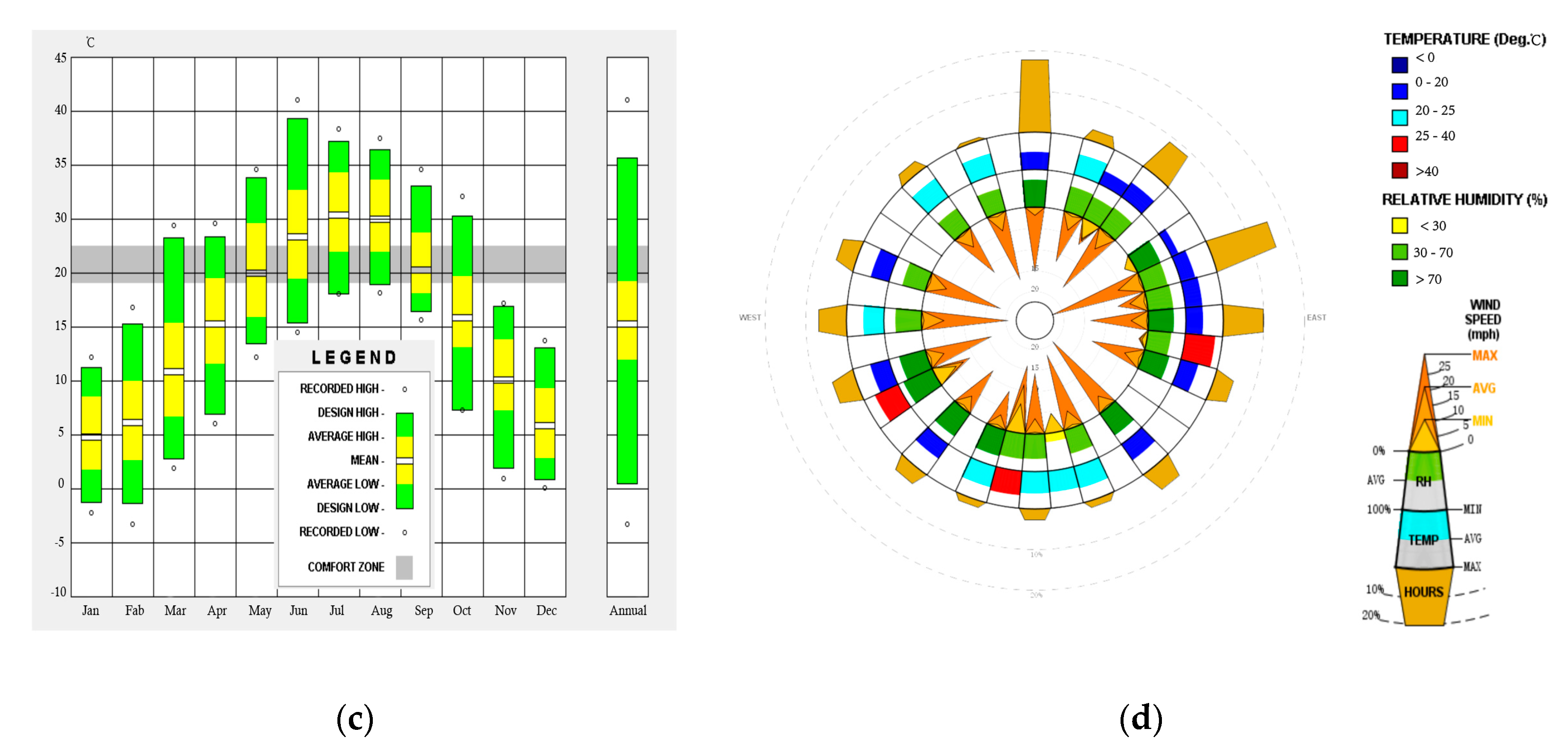

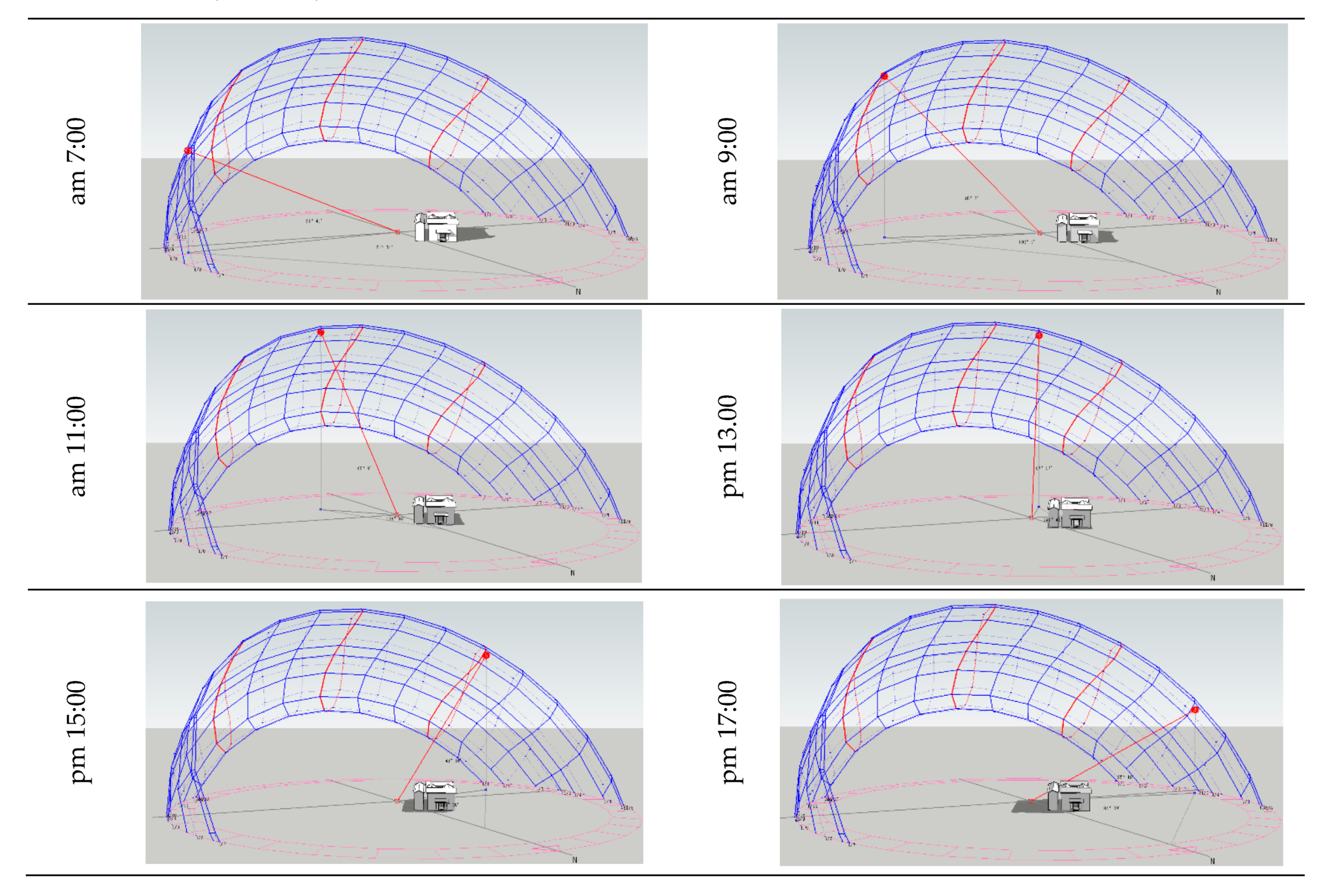
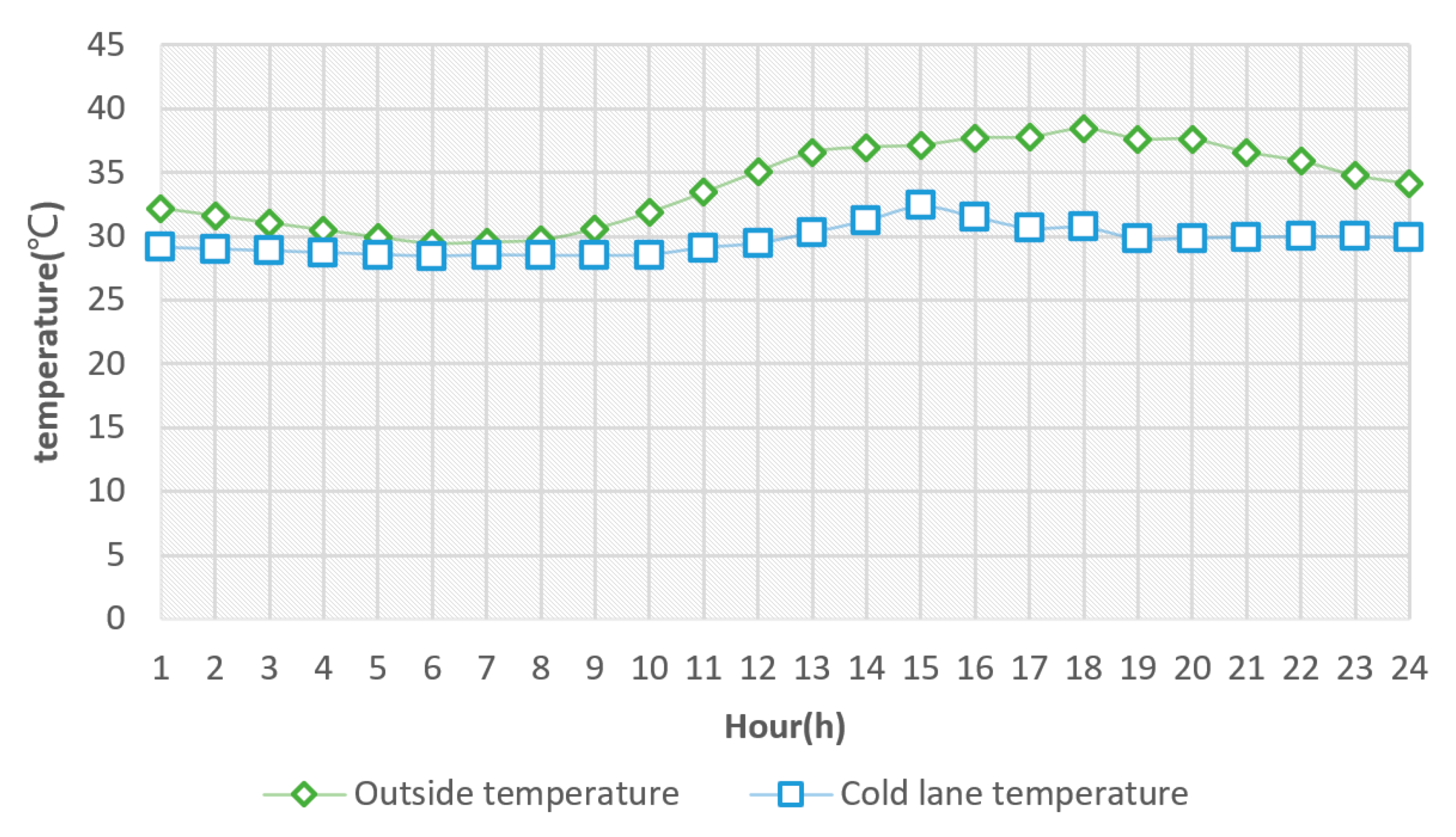


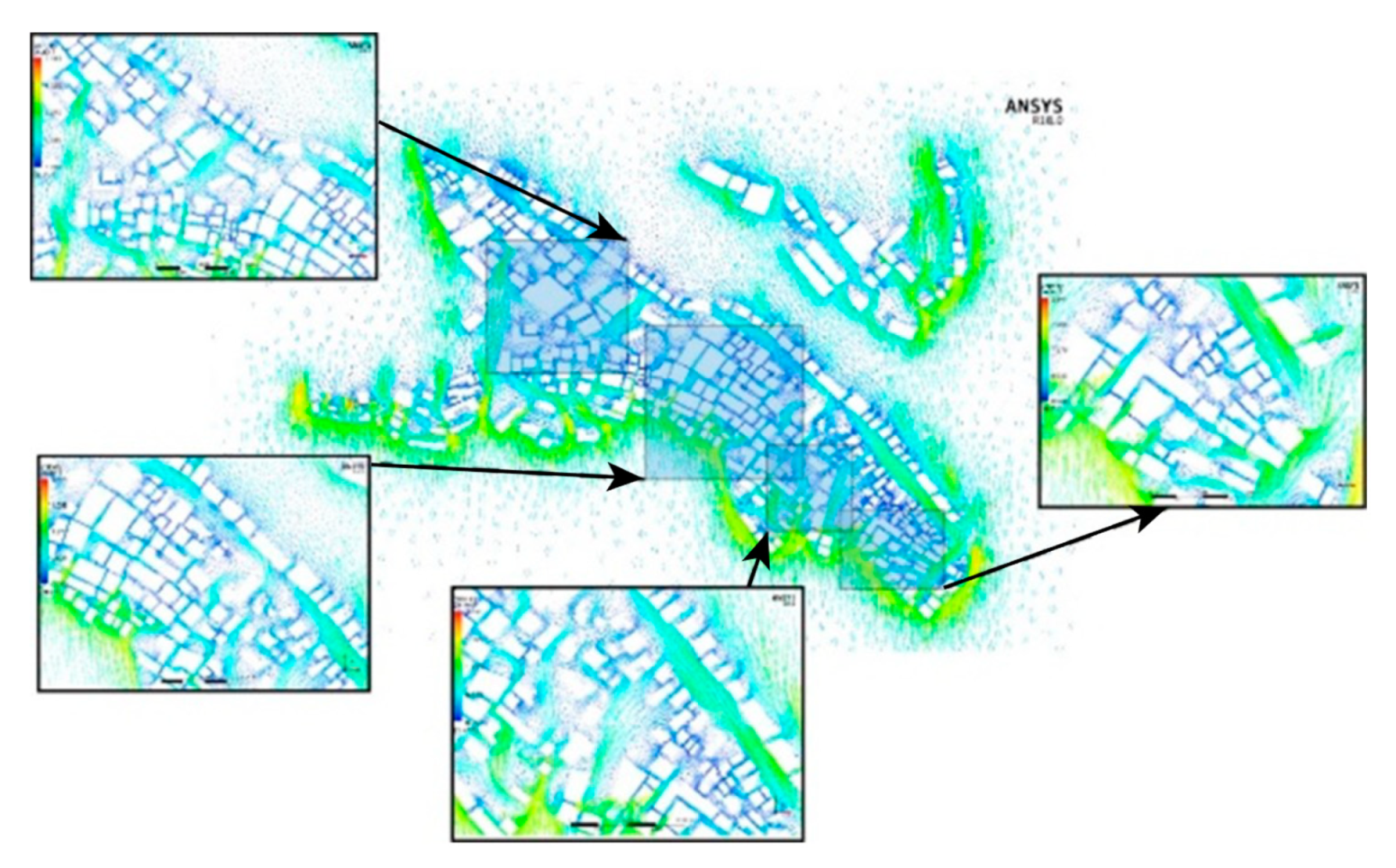
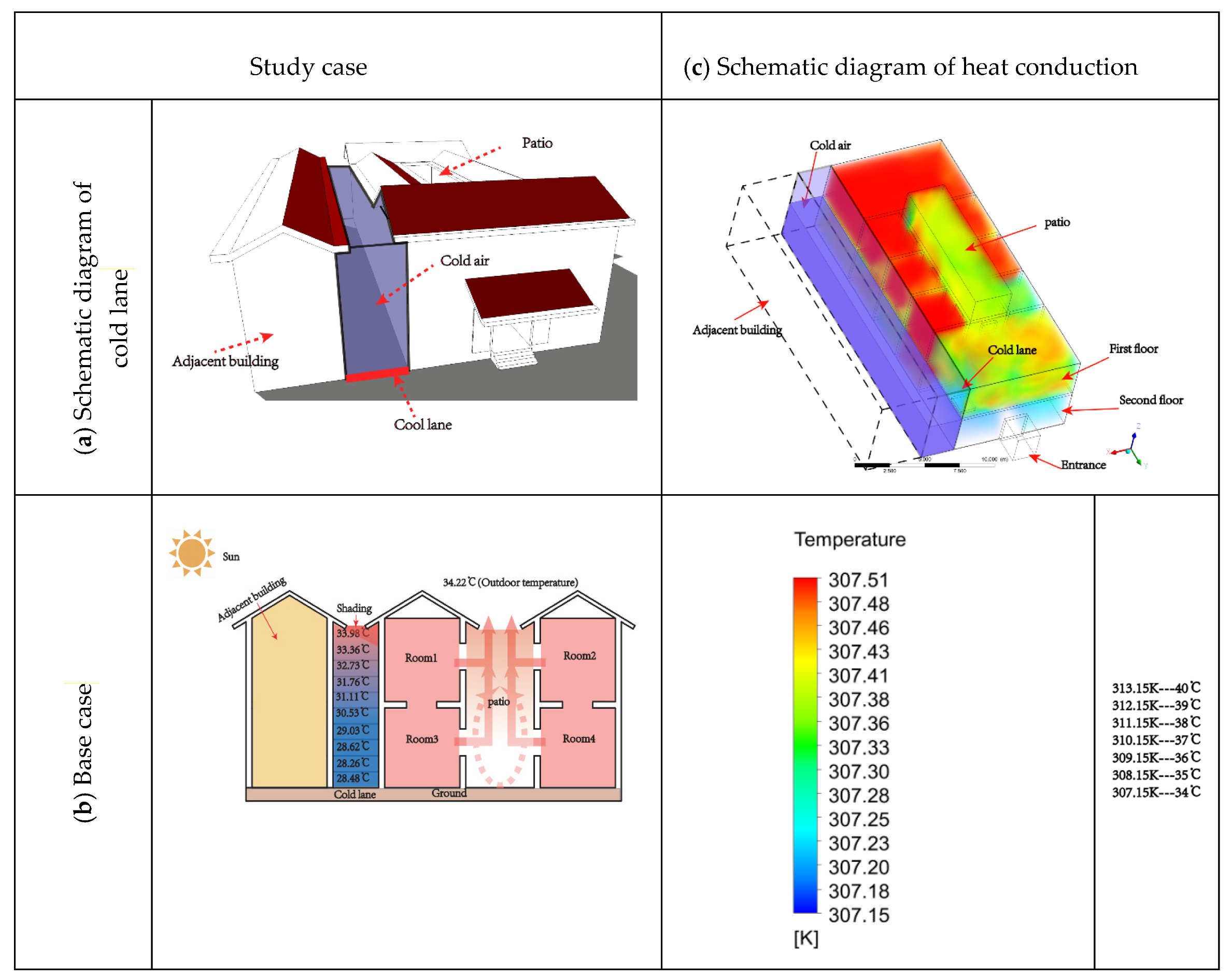


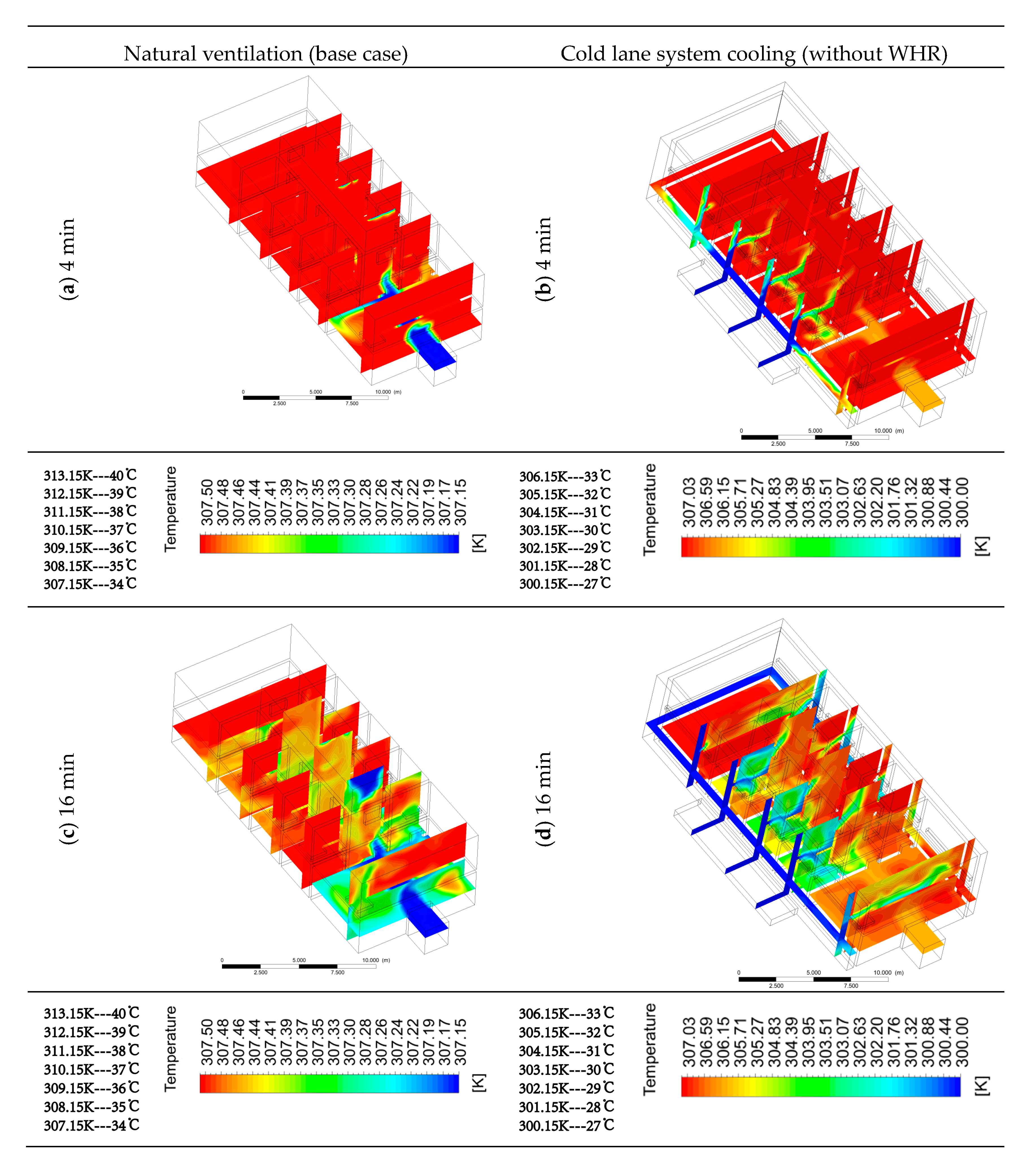



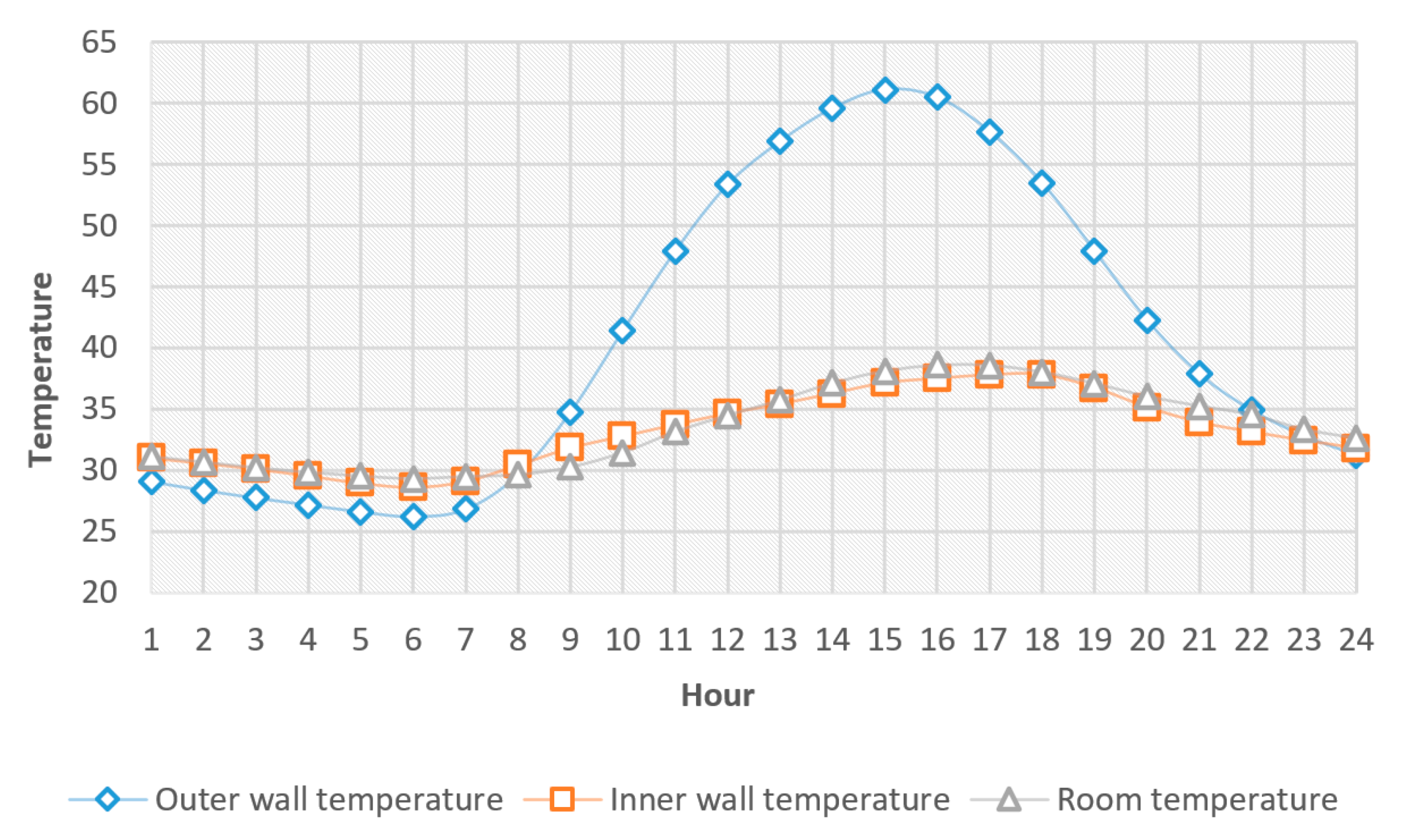



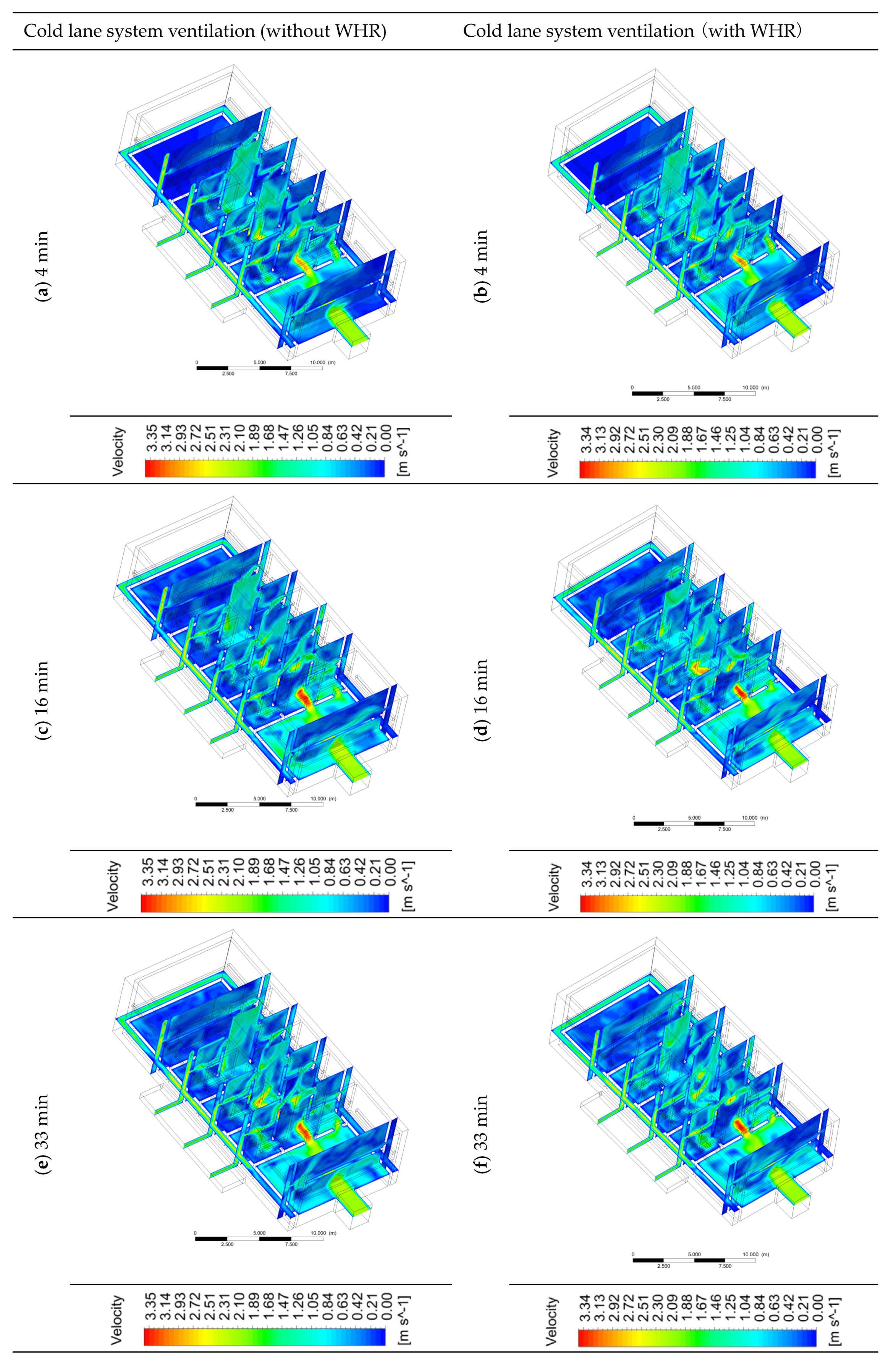
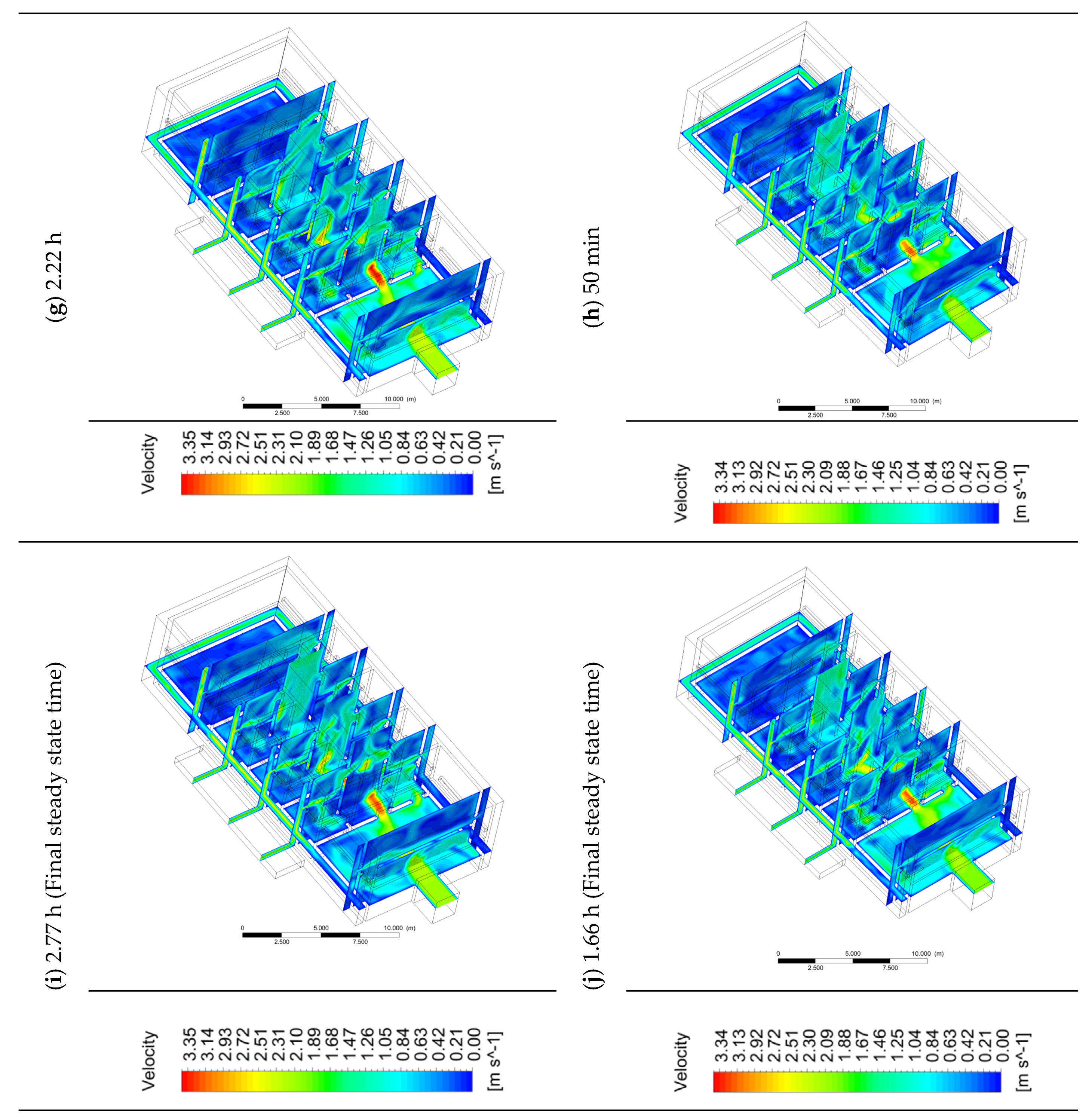
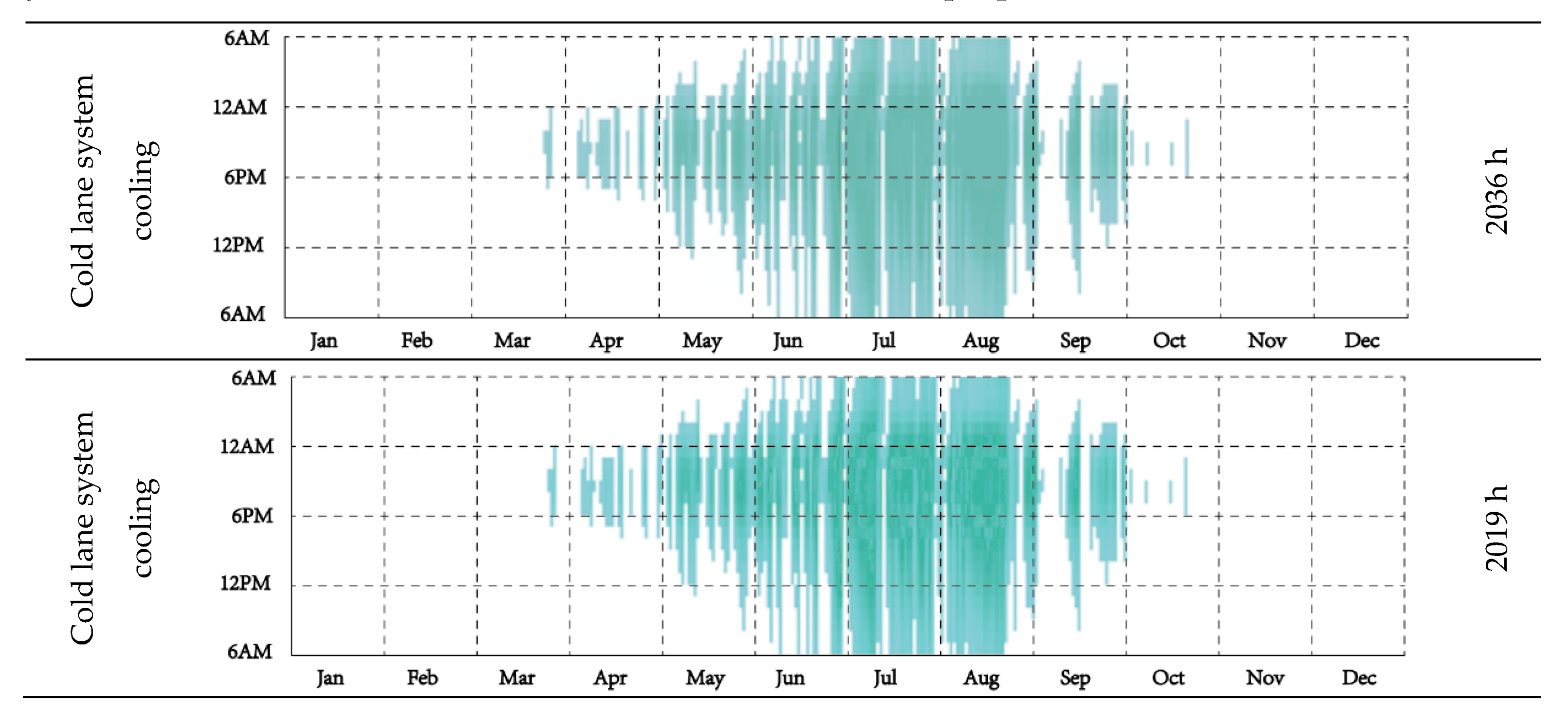
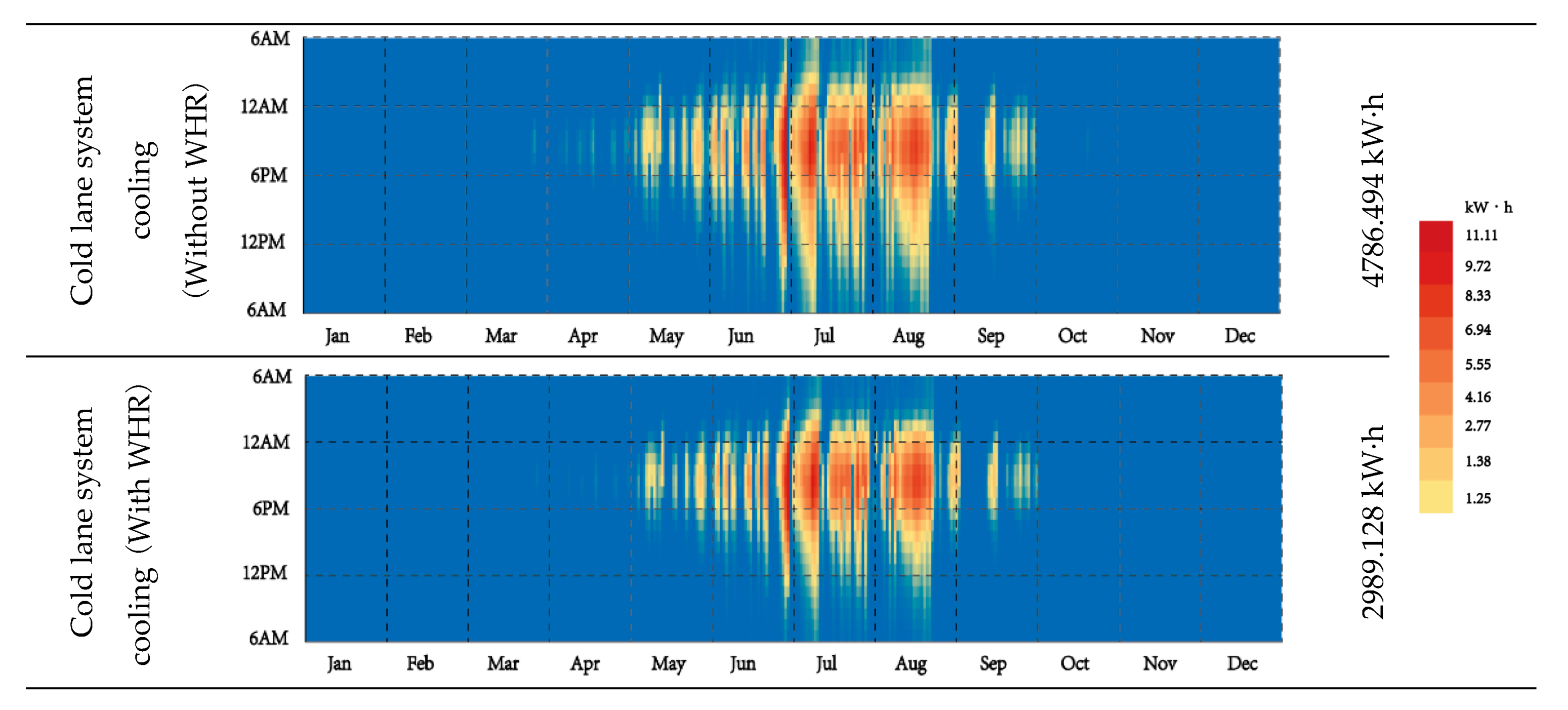
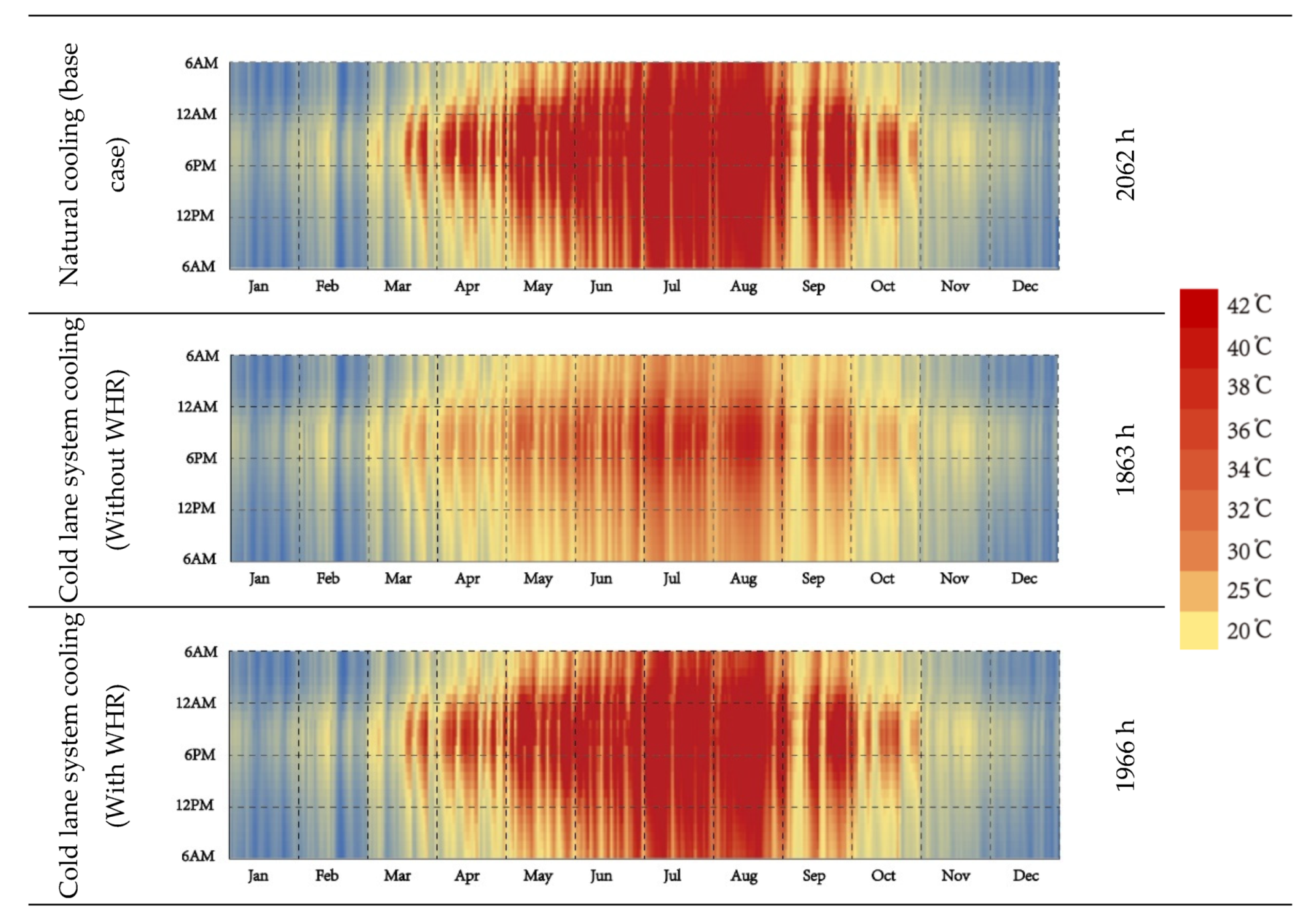
| Courtyard Parameter | Detailed Description |
|---|---|
| Building location | Shuhe, Ankang, Shaanxi Province, China (32.9357° N, 109.7037° E) |
| Climate zone | Hot summer and cold winter |
| Simulation time | All times throughout the year when the temperature exceeds 28 °C |
| Room information | 5.6 m (w) × 9.22 m (l) × 3 m (h) × 4; 3 m (w) × 4 m (l) ×3 m (h) × 12 |
| Total surface area | 349.04 m2 |
| Population density | 1.1 people per room |
| Building Material Parameters | Details |
|---|---|
| Exterior wall | Cement mortar (15 mm) + Masonry structure (240 mm) + Cement mortar (15 mm) + White lime (2 mm) |
| Floor | Ceramic tile (10 mm) + Cement mortar (10 mm) + Reinforced concrete (100 mm) |
| Internal partition | White lime (2 mm) + Cement mortar (15 mm) + Masonry structure (120 mm) + Cement mortar (15 mm) + White lime (2 mm) |
| Glass | Thickness (6 mm); solar transmittance at normal incidence: 0.775; front side solar reflectance at normal incidence: 0.071; back side solar reflectance at normal incidence: 0.071; visible transmittance at normal incidence: 0.881; front side visible reflectance at normal incidence: 0.08; back visible reflectance at normal incidence: 0.08; front side infrared hemispherical emissivity: 0.84; back side infrared hemispherical emissivity: 0.84; conductivity: W/m k |
| Roof | Bluestone tile (6 mm) + Waterproof mortar (6 mm) + Ceramic tile (10 mm) + Cement mortar (15 mm) + White lime (2 mm) |
| Material | Density(ρ) kg/m3 | Thermal Conductivity(λ) W/m·K | Thermal Storage Coefficient (S) W/(m2·K) | Specific Heat Capacity (C) kj/(kg·K) |
|---|---|---|---|---|
| Cement mortar | 1800 | 0.93 | 11.37 | 1.05 |
| Masonry structure | 1700 | 0.76 | 9.96 | 1.05 |
| White lime | 1600 | 0.81 | 10.07 | 1.05 |
| Reinforced concrete | 2300 | 1.51 | 15.36 | 0.92 |
| Bluestone tile | 2000 | 1.16 | 12.56 | 0.92 |
| Waterproof mortar | 600 | 0.17 | 3.33 | 1.47 |
Publisher’s Note: MDPI stays neutral with regard to jurisdictional claims in published maps and institutional affiliations. |
© 2020 by the authors. Licensee MDPI, Basel, Switzerland. This article is an open access article distributed under the terms and conditions of the Creative Commons Attribution (CC BY) license (http://creativecommons.org/licenses/by/4.0/).
Share and Cite
Yao, X.; Dewancker, B.J.; Guo, Y.; Han, S.; Xu, J. Study on Passive Ventilation and Cooling Strategies for Cold Lanes and Courtyard Houses—A Case Study of Rural Traditional Village in Shaanxi, China. Sustainability 2020, 12, 8687. https://doi.org/10.3390/su12208687
Yao X, Dewancker BJ, Guo Y, Han S, Xu J. Study on Passive Ventilation and Cooling Strategies for Cold Lanes and Courtyard Houses—A Case Study of Rural Traditional Village in Shaanxi, China. Sustainability. 2020; 12(20):8687. https://doi.org/10.3390/su12208687
Chicago/Turabian StyleYao, Xingbo, Bart J. Dewancker, Yuang Guo, Shuo Han, and Juan Xu. 2020. "Study on Passive Ventilation and Cooling Strategies for Cold Lanes and Courtyard Houses—A Case Study of Rural Traditional Village in Shaanxi, China" Sustainability 12, no. 20: 8687. https://doi.org/10.3390/su12208687





